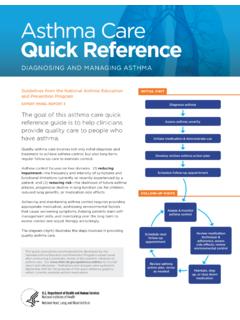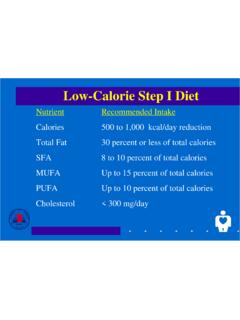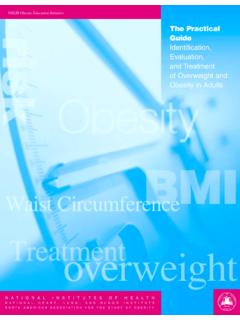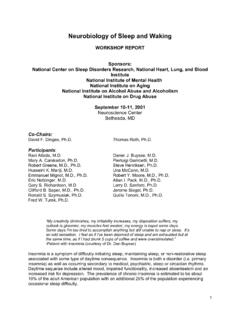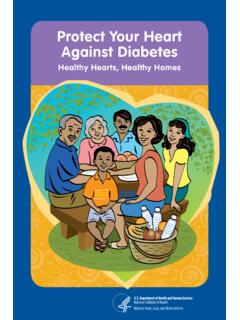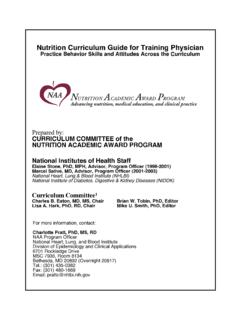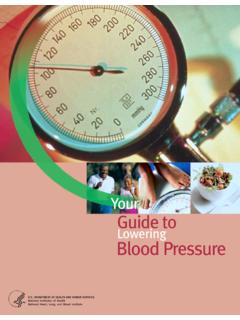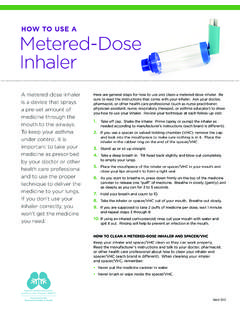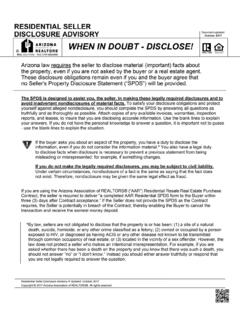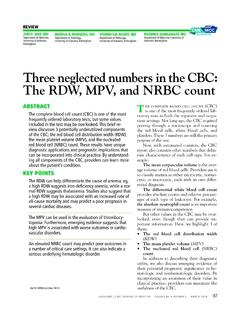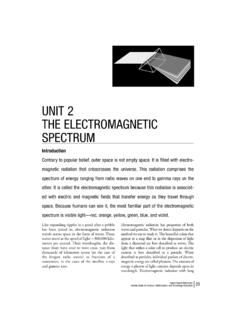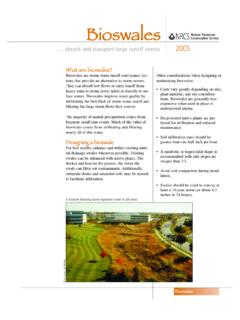Transcription of Quick Reference--Managing Asthma During Pregnancy ...
1 NATIONAL Asthma EDUCATION AND PREVENTION PROGRAMQ uick Reference from the Working Group Report onManaging Asthma During Pregnancy :Recommendations for Pharmacologic TreatmentUpdate 2004* DEPARTMENT OF HEALTH AND HUMAN SERVICESN ational Institutes of HealthNational Heart, Lung, and Blood Institute*This Quick Referencesummarizes the findings of the NAEPP Working Group Report on Managing Asthma During Pregnancy :Recommendations for Pharmacologic Treatment Update 2004(NIH Publication No. 05-3279), which is available 2 NAEPP Working Group Report on Managing Asthma During Pregnancy : Recommendations for Pharmacologic TreatmentMaintaining adequate control of asthmaduring Pregnancy is important for thehealth and well-being of both the moth-er and her baby. Asthma has beenreported to affect to percent ofpregnant women,1making it potentiallythe most common serious medical problem to complicate Pregnancy .
2 Thelargest and most recent studies suggestthat maternal Asthma increases the riskof perinatal mortality, preeclampsia,preterm birth, and low birth weightinfants. More severe Asthma is associat -ed with increased risks,2, 3while better-controlled Asthma is associated withdecreased 1993, the National Asthma Educationand Prevention Program (NAEPP) pub-lished the Report of the Working Groupon Asthma and Pregnancy ( Asthma and Pregnancy Report 1993),5whichpresented recommendations for the man-agement of Asthma During then, there have been revisions to the general Asthma treatment guidelines,Guidelines for the Diagnosis andManagement of Asthma Expert PanelReport 2 (EPR-2 1997),6and ExpertPanel Report: Guidelines for theDiagnosis and Management of Asthma Update on Selected Topics 2002(EPR Update 2002);7release of newasthma medications.
3 And publication of new gestational safety Asthma During Pregnancy :Recommendations for PharmacologicTreatment Update 2004( Asthma andPregnancy Update 2004)8reflects theNAEPP s commitment to keep recom-mendations for clinical practice up todate and based on systematic reviews ofthe evidence. Asthma and Pregnancy Update 2004 was developed through thecollective expertise of an expert panel on Asthma and Pregnancy (WorkingGroup). The NAEPP Science BaseCommittee and NAEPP CoordinatingCommittee members provided reviewand comment. The recommendationsmade in Asthma and Pregnancy Update2004 are intended to assistclinical deci-sionmaking; the clinician and patient stillneed to develop individual treatmentplans that are tailored to the specificneeds and circumstances of the scope of the current systematicreview is pharmacologic treatment of Asthma in women During their Pregnancy .
4 However, highlights fromEPR-2 1997 and EPR Update 2002 relative to other aspects of Asthma careare also presented because they shouldenhance the overall success and safety of managing Asthma in Review of the EvidenceA systematic review of the evidence onthe safety of Asthma medications duringpregnancy was conducted by drug 226 articles retrieved in the search of literature published in peer-reviewedjournals from January 1990 throughMay 2003, 42 met criteria for inclusionin the evidence review; 2 additional articles published after May 2003 wereincluded, for a total of 44 summary of the findings from the evidence, arranged by medication category, experimental animal study9and sixhuman studies were included. The sixhuman studies consisted of one casereport10and five clinical studies11 15that included a total of 6,667 pregnantwomen, of whom 1,929 had Asthma and1,599 had taken beta2-agonists.
5 Thedata were reassuring regarding the safetyof beta2-agonists During data were available for long-acting inhaled beta2-agonistshave become available since 1993 salmeterol and formoterol. Limited data are available on their use During Pregnancy . The pharmacologic and toxicologic profiles of these two drugsare similar to the short-acting inhaledbeta2-agonists, with the exception oftheir prolonged retention in the experimental animal studies16 22and eight human studies were experimental animal studiesconfirm the association of high-dosetheophylline and adverse Pregnancy outcomes in animals. The eight humanstudies, consisting of two case reports23, 24and six clinical studies11, 13, 25 28(ofwhich two were randomized controlledtrials), included a total of 57,163 preg-nant women, of whom 3,616 had asth-ma and 660 had taken and clinical experience confirmthe safety of theophylline at recommend-ed doses (to serum concentration of5 12 mcg/mL) During Pregnancy .
6 In arandomized controlled trial, there wereno differences in Asthma exacerbationsor maternal or perinatal outcomes in thetheophylline versus the beclomethasonedipropionate treatment , in the theophylline treatmentgroup, there were higher levels of report-ed side effects and discontinuation of themedication and an increase in the pro-portion of women with forced expirato-ry volume in 1 second (FEV1) at lessthan 80 percent of that data on anticholinergics were avail-able for the current evidence corticosteroidsThree experimental animal studies29 31and 10 human studies were human studies included eight studies of pregnant women. Of the eightstudies, five were cohort studies;11, 13, 32 34one was a controlled trial;35and twowere randomized controlled , 28 These eight studies included a total of21,072 pregnant women, of whom16,900 had Asthma and 6,113 had takeninhaled corticosteroids.
7 Also includedwere two studies of newborns from theSwedish Birth Registry one comparedthe rate of abnormalities among 2,014newborns whose mothers had takenbudesonide to the rate of abnormalitiesin the total newborn population,although the number in that populationwas not reported;36the other study com-pared 2,900 newborns whose mothershad taken budesonide to the total new-born population of 293,948;37there maybe some overlap in the populations ofthese two studies. There are three majorconclusions from the evidence review:(1) the risk of Asthma exacerbationsassociated with Pregnancy can bereduced and lung function (FEV1)improved with the use of inhaled corti-costeroid therapy;25, 28, 34(2) no studiesUpdate 2004 Quick Reference from the Working Group Report onManaging Asthma During Pregnancy :Recommendations for Pharmacologic TreatmentNATIONAL Asthma EDUCATION ANDPREVENTION PROGRAM3 Quick Referenceto date, including studies of large birthregistries, have related inhaled cortico-steroid use to any increases in congeni-tal malformations or other adverseperinatal outcomes; and (3) the preponderance of data on inhaled corticosteroids During Pregnancy iswith budesonide.
8 Few or no studies areavailable on the other inhaled cortico-steroid formulations During (systemic) corticosteroidsNine experimental animal studies38 46and eight human studies were includ-ed. The animal studies do not changethe previous understanding (Asthmaand Pregnancy Report 1993)5of thesteroid-mediated clefting or decreasesin fetal growth in animals. The eighthuman studies in the current evidencereview included one report of twometa-analyses:47 one meta-analysisused six cohort studies that included51,380 pregnant women, of whom535 had taken oral corticosteroids; theother meta-analysis used four case-control studies,48 51each of which wasalso eligible to be included in the evi-dence review. These four case-controlstudies included 52,038 pregnantwomen, of whom 25 had taken oralcorticosteroids. The remaining threehuman studies included one case-control study52and two prospectivecohort studies11, 13that included a totalof 4,321 pregnant women, of whom1,998 had Asthma and 213 had takenoral corticosteroids.
9 The findings from the current evidence review areconflicting. Oral corticosteroid use,especially During the first trimester of Pregnancy , is associated with anincreased risk for isolated cleft lip withor without cleft palate (the risk in thegeneral population is percent; therisk in women on oral corticosteroidsis percent).47 However, very fewpregnant women who had oralsteroid-dependent Asthma were includ-ed in the studies, and the length, timing, and dose of exposure to thedrug were not well described. Oralcorticosteroid use During Pregnancy in patients who have Asthma is associ-ated with an increased incidence ofpreeclampsia and the delivery of both preterm and low birth , 47, 52 However, the availabledata make it difficult to separate theeffects of the oral corticosteroids onthese outcomes from the effects ofsevere or uncontrolled Asthma , whichhas been associated with maternaland/or fetal experimental animal studies andtwo human studies were included inthe current review.
10 The two humanstudies consisted of prospective cohortstudies11, 13that included 4,110 preg-nant women, of whom 1,917 hadasthma and 318 had taken safety of using cromolyn duringpregnancy is supported by the currentreview of modifiersLeukotriene modifiers include twocompounds available as oral tablets(the receptor antagonists montelukastand zafirlukast) and 5-lipoxygenasepathway inhibitors ( , zileuton). Noanimal studies and one human studywere available for review. The humanstudy was an observational study of2,205 pregnant women, 873 withasthma, of whom 9 took leukotrienemodifiers, but the specific agent wasnot conclusion is thatminimal data are currently availableon the use of leukotriene modifiersduring Pregnancy . Reassuring animalstudies have been submitted to theFood and Drug Administration (FDA)for leukotriene receptor antagonistsbut not for the leukotriene lipoxy-genase for Managing AsthmaDuring PregnancyThe Working Group recommends the following principles and stepwiseapproach to pharmacologic therapyfor managing Asthma During pregnan-cy.
